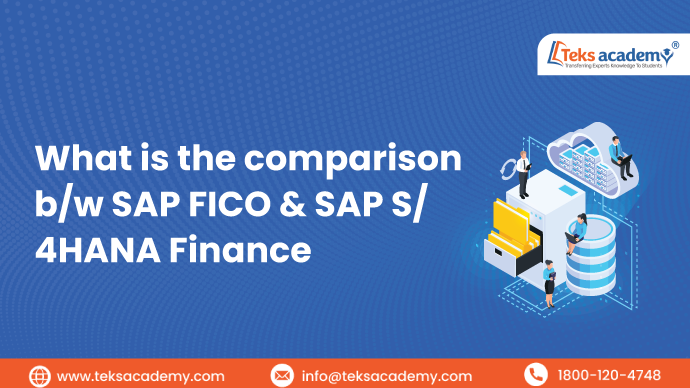In the real world of Enterprise Resource Planning (ERP), the go-to solution for managing financial accounting and controlling, is SAP FICO. Due to the rise of digital transformation, the advanced platform is called S/4HANA. Which is designed for real-time data processing and simplified financial management. It plays a key role in making informed decisions and upgrading your financial systems. For this, understanding the difference between these two modules is crucial. Stay ahead in your finance management and gain expertise through the best SAP FICO training!
What is SAP FICO?
This module has been designed mainly for financial management and accounting processes within organizations. The word “FICO” stands for Financial Accounting (FI) and Controlling (CO). Together, they provide organizations with comprehensive tools. It deals with managing accounting records, tracking financial data, and ensuring compliance with regulatory standards.
Key Functionalities FICO:
| Financial Accounting | Controlling |
| General Ledger Accounting | Cost Element Accounting |
| Accounts Payable (AP) | Cost Center Accounting |
| Accounts Receivable (AR) | Profit Center Accounting |
| Asset Accounting | Internal Orders |
What is S/4 HANA?
It is an important integrated ERP suite implemented by SAP. Mainly designed to help organizations streamline their business processes. The name S/4HANA stands for “SAP Business Suite 4 HANA”. Where HANA refers to in-memory computing platform that enables high-speed data processing and analysis.
Key Functionalities of S/4 HANA :
| Finance Management | Supply Chain Management |
| Financial Accounting (FI) | Inventory Management |
| Controlling (CO | Material Requirements Planning |
| Financial Close | Logistics Execution |
| Real-Time Analytics | Supplier Management |
Key comparison between SAP FICO and S/4 HANA
Both are the key players in ERP, helping businesses in managing financial processes. The Best SAP FICO training provides essential knowledge for navigating the evolving financial system.
Technology Platform:
- FICO runs on traditional databases like Oracle, using batch processing and separate modules for Financial Accounting (FI) and Controlling (CO).
- S/4HANA Finance operates on the in-memory HANA platform, enabling real-time data processing and consolidating FI and CO into a unified structure.
User Interface:
- FICO uses the older GUI (Graphical User Interface), which is functional but complex.
- S/4HANA Finance offers the modern Fiori interface, providing an intuitive, mobile-friendly experience with personalized dashboards.
Data Model:
- FICO uses multiple tables with separate data structures for FI and CO, leading to redundancy.
- S/4HANA Finance features the Universal Journal, integrating financial and controlling data into one streamlined table.
Real-Time Reporting and Analytics:
- FICO offers limited real-time capabilities and relies on batch processing.
- S/4HANA Finance provides real-time reporting and embedded analytics for instant insights.
Compatibility and Innovation:
- FICO is part of SAP’s legacy ECC (ERP Central Component) system, with limited innovation.
- S/4HANA Finance is cloud-ready, future-proof, and constantly updated with new features like machine learning and predictive analytics.
Conclusion:
Meeting the demands of today’s digital businesses, SAP FICO and S/4HANA remain as robust financial management tools. These offer modern and real-time solutions for organizations. Learn the advanced functionalities, simplified data models, and enhanced real time reporting by investing in the best SAP training institute in Hyderabad.






